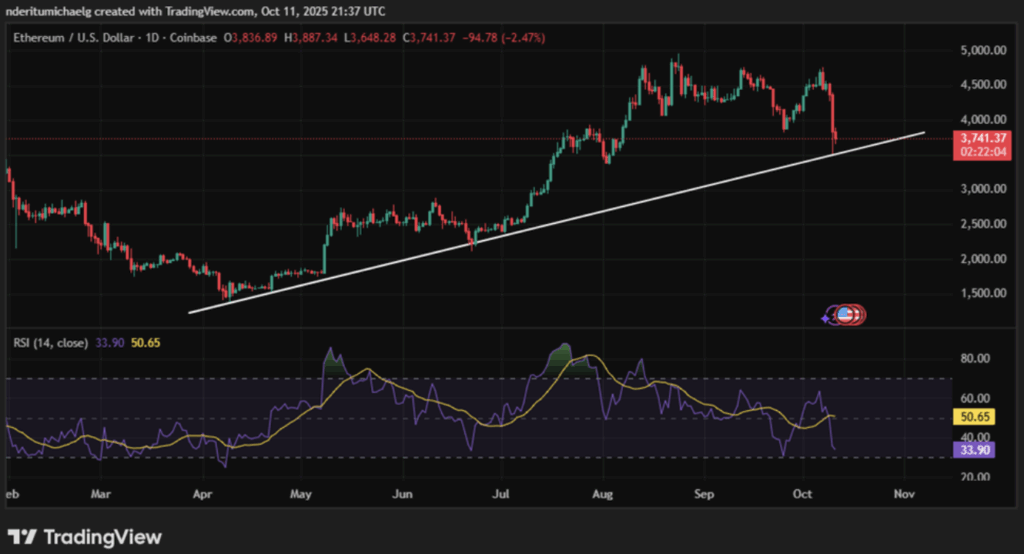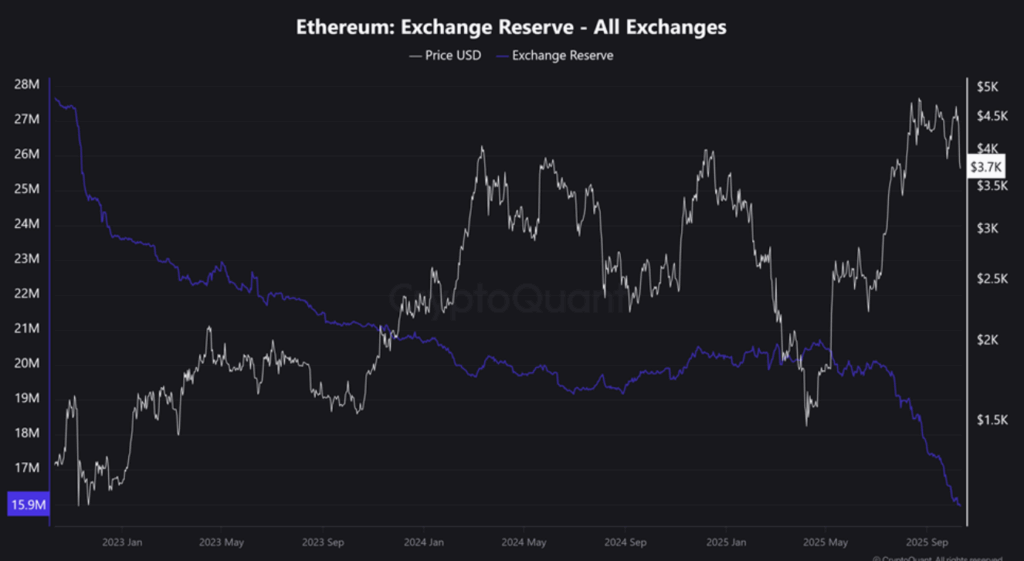- Whales add $45M in spot inflows while long positions surge to $3.3B.
- ETH bounces off key ascending trendline near $3,500 with bullish RSI divergence.
- Exchange reserves hit multi-year lows, signaling strong accumulation.
Ethereum wrapped up the week bruised but not broken, falling over 15% after Friday’s Trump-triggered tariff panic shook the entire crypto market. Yet despite the chaos, fresh data is now hinting that ETH might already be lining up for a sharp recovery.
Over the last 24 hours, large wallets injected around $45 million in net spot inflows—a sharp contrast to the heavy outflows seen just days earlier. Even more striking, whales reportedly opened $3.3 billion worth of ETH long positions on the derivatives side, signaling growing confidence that a rebound is on the horizon.
To put it in perspective, Ethereum saw $677 million in net outflows on Thursday — its biggest single-day loss in months. While spot flows are still negative (around $234 million), that’s a notable cooldown from the extreme pressure seen during the tariff crash.
These metrics suggest whales might be quietly flipping the script from fear to accumulation.
Ethereum Finds Its Footing on Key Trendline Support
For most of 2025, Ethereum has been forming a consistent ascending support line, acting as a safety net during every major pullback. It’s bounced off this same trendline several times — and Friday was no exception.
After plunging as low as $3,510, ETH managed to claw its way back up to around $3,741, showing a flicker of strength. On the daily chart, a bullish divergence with the RSI also emerged — while price made a lower low compared to late September, the RSI was actually higher. That kind of setup usually signals a potential reversal in momentum.
The recovery wasn’t massive, but it showed something important: buyers are still defending key levels.

Institutional Demand Still Pouring In
Crypto analyst Dan Gambardello pointed out that institutional players have been pouring liquidity into Ethereum over the last few weeks. He doesn’t believe they’re doing it just to ride out a short-term top, especially now that global liquidity is improving.
Interestingly, Gambardello compared the current ETH setup to the August–September 2020 cycle, when Ethereum spent weeks consolidating before erupting into a major rally. The similarities, he said, are “too clean to ignore.”
If the same pattern holds, ETH might be quietly building the foundation for another powerful leg upward—potentially in the next few weeks or months.
Meanwhile, exchange data seems to back that up. Ethereum’s exchange reserves dropped again to 15.9 million coins, a new multi-year low. Fewer coins sitting on exchanges usually means less selling pressure and higher long-term confidence.

The Smart Money Shakeout
Friday’s flash crash felt like a coordinated wipeout. Billions in liquidations cleared out leveraged traders, and new wallet data suggested someone—or something—timed it perfectly.
One newly created account on Hyperliquid reportedly pulled in over $72 million in profits from a well-timed Ethereum short. A few similar trades were spotted in Bitcoin markets too, sparking speculation of insider coordination behind the selloff.
Still, big money seems to be cycling back in. Despite the brutal drop, Ethereum’s fundamentals—low exchange reserves, strong whale accumulation, and renewed institutional interest—paint a picture that’s more bullish than it looks on the surface.
If history’s any guide, this could be the calm before ETH’s next run, not the end of it.














